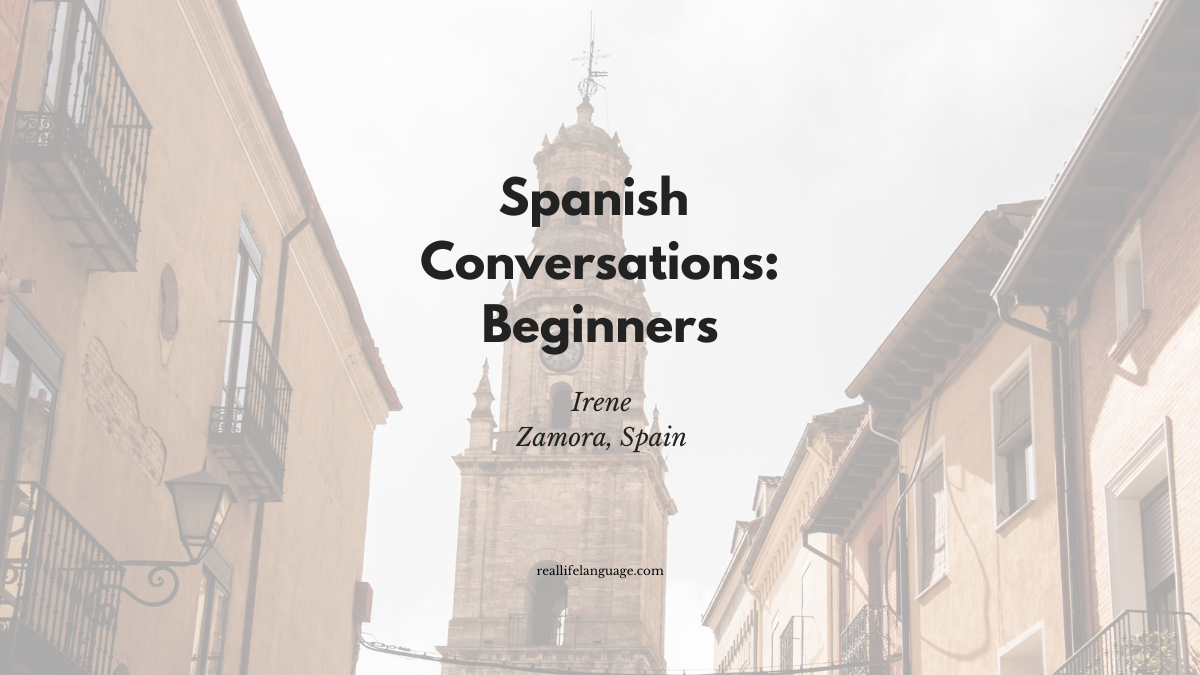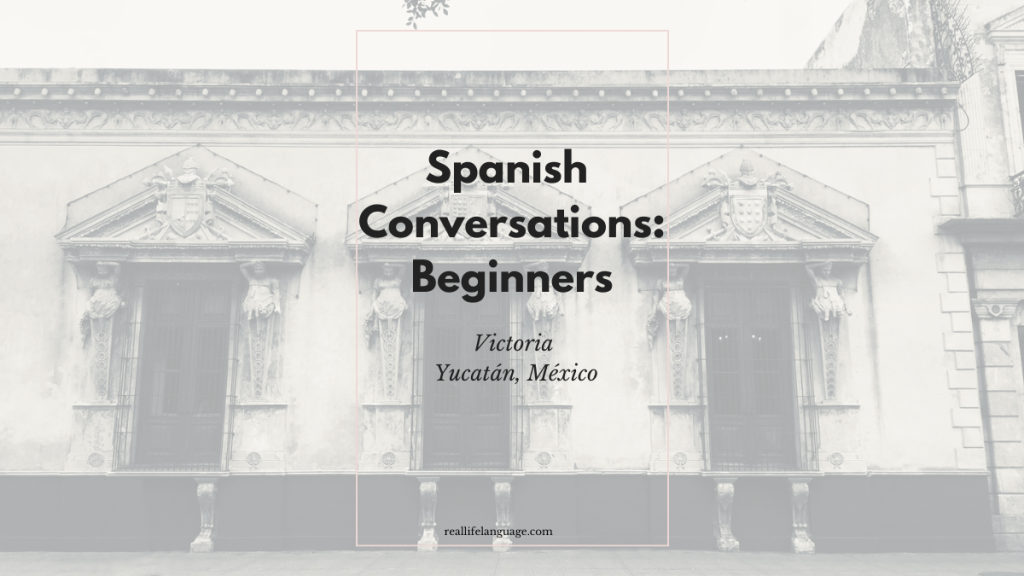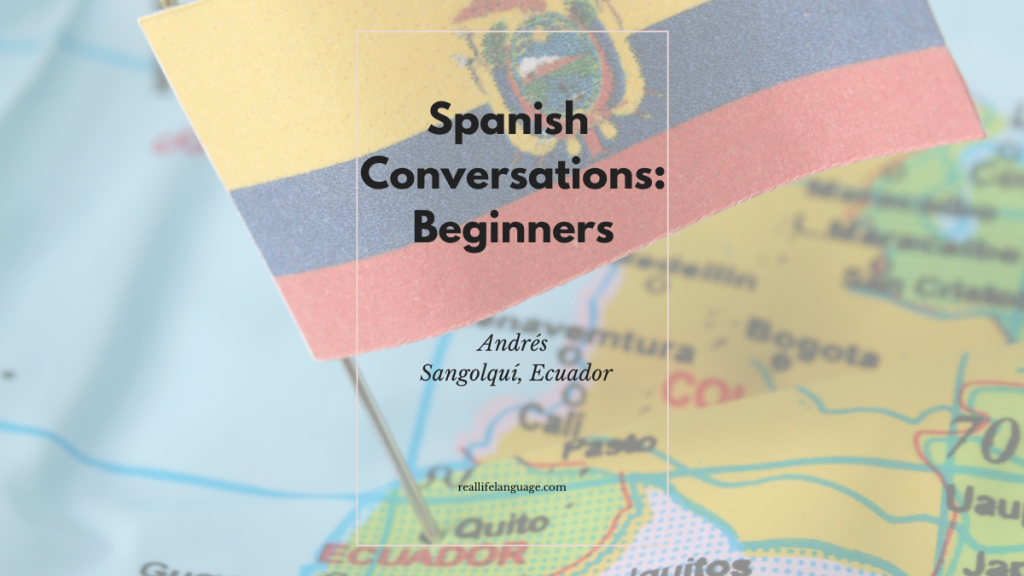
In this conversation, Irene — a Spanish teacher originally from Zamora and living near Tbilisi — shares real-life answers to common beginner questions. This piece collects the highlights and turns them into practical lessons for learners who want to learn Spanish through everyday conversation and useful phrases.
Who is Irene? Short profile and useful phrases
Irene introduces herself simply and naturally. Learners can use her sentences as templates when talking about themselves.
- Me llamo Irene. — My name is Irene.
- Soy de Zamora, España. — I am from Zamora, Spain.
- Vivo en Georgia, cerca de Turquía y Rusia. — I live in Georgia, near Turkey and Russia.
- Mi cumpleaños es el 9 de septiembre. — My birthday is September 9th.
“I am a very happy person. I am very patient… I am organized and a perfectionist.”
Use this pattern to describe personality: Soy + adjective. For physical traits: Tengo + noun or Soy + adjective (e.g., Tengo los ojos marrones; Soy delgada).
Talking about family, studies and work
Irene mentions family and work in short, natural answers — exactly the kind of exchanges beginners will practise.
- ¿Tienes hermanos? — Do you have siblings?
- Tengo un hermano mayor. Se llama Diego. — I have one older brother. His name is Diego.
- Trabajo como profesora en la universidad y doy clases privadas por internet. — I work as a university teacher and I give private online lessons.
Phrase pattern for schedules: Trabajo por las mañanas y por las tardes, de lunes a viernes.
Daily routine — key verbs and time phrases
Irene’s routine introduces verbs and connectors useful for describing days.
- Me levanto a las ocho. — I wake up at eight.
- Primero tomo un café. — First I have a coffee.
- Preparo las clases y doy clase hasta las ocho. — I prepare lessons and teach until eight.
- Me acuesto alrededor de las once. — I go to bed around eleven.
Useful connectors: después (after), luego (then), al mediodía (at noon), alrededor de (around).
Hobbies, travel and favourites — vocabulary to personalise answers
Irene talks about trips, movies, food and hobbies. These topics are great for simple conversation practice.
- Me gusta leer y escribir poesía. — I like to read and write poetry.
- Me encanta la fotografía. — I love photography.
- Mi película favorita es “Amanece, que no es poco”. — My favourite film is “Amanece, que no es poco”.
- Me gusta el sushi, la pasta y la comida española. — I like sushi, pasta and Spanish food.
Shopping, food and city life
Irene contrasts shopping in Georgia with shopping in Spain — a useful cultural point for learners to describe where they live.
- En España puedes comprar de todo en un supermercado. — In Spain you can buy everything in one supermarket.
- Aquí compro fruta en la frutería y otras cosas en tiendas separadas. — Here I buy fruit at the greengrocer and other things in separate shops.
Useful sentence: Tengo que hacer la compra varias veces a la semana. — I have to shop several times a week.
Sports and cultural notes
Sports are often a conversation starter. Irene explains popular sports in Spain and personal preferences.
- El fútbol es el deporte por excelencia. — Football is the main sport.
- También son populares el tenis, el balonmano y el pádel. — Tennis, handball and paddle tennis are also popular.
- No me gusta mucho el fútbol, pero me encanta el tenis y la natación. — I don’t like football much, but I love tennis and swimming.
Practical phrases list for learners
- ¿Cómo te llamas? — What’s your name?
- ¿De dónde eres? — Where are you from?
- ¿A qué te dedicas? — What do you do (for work)?
- ¿Qué te gusta hacer en tu tiempo libre? — What do you like to do in your free time?
- ¿Dónde compras la comida? — Where do you buy food?
Watching and repeating real conversations like this helps learners to learn Spanish naturally: phrases, rhythm and everyday vocabulary. Use the examples above to build your own answers and practise speaking aloud.
To finish, remember: practise short answers, learn a few phrases for each topic (family, work, routines, hobbies) and use them in conversation. These simple steps make it easier to learn Spanish and sound natural quickly.
100s of videos to learn Spanish:
https://real-life-language.kit.com/b1531a6404
Learn Spanish with Everyday Conversations: Andrés from Ecuador

